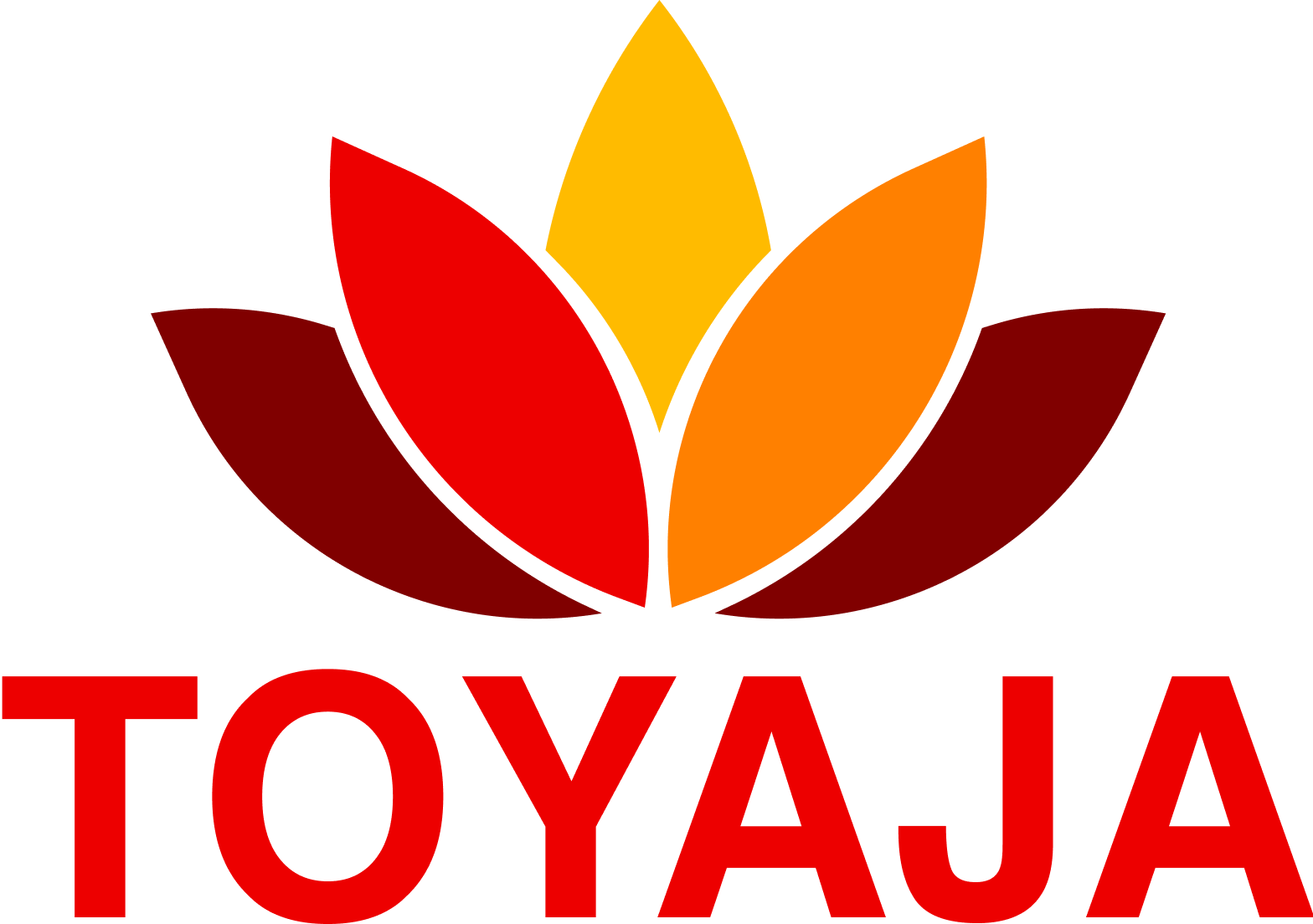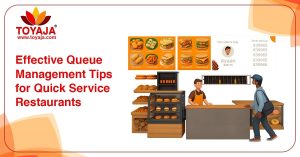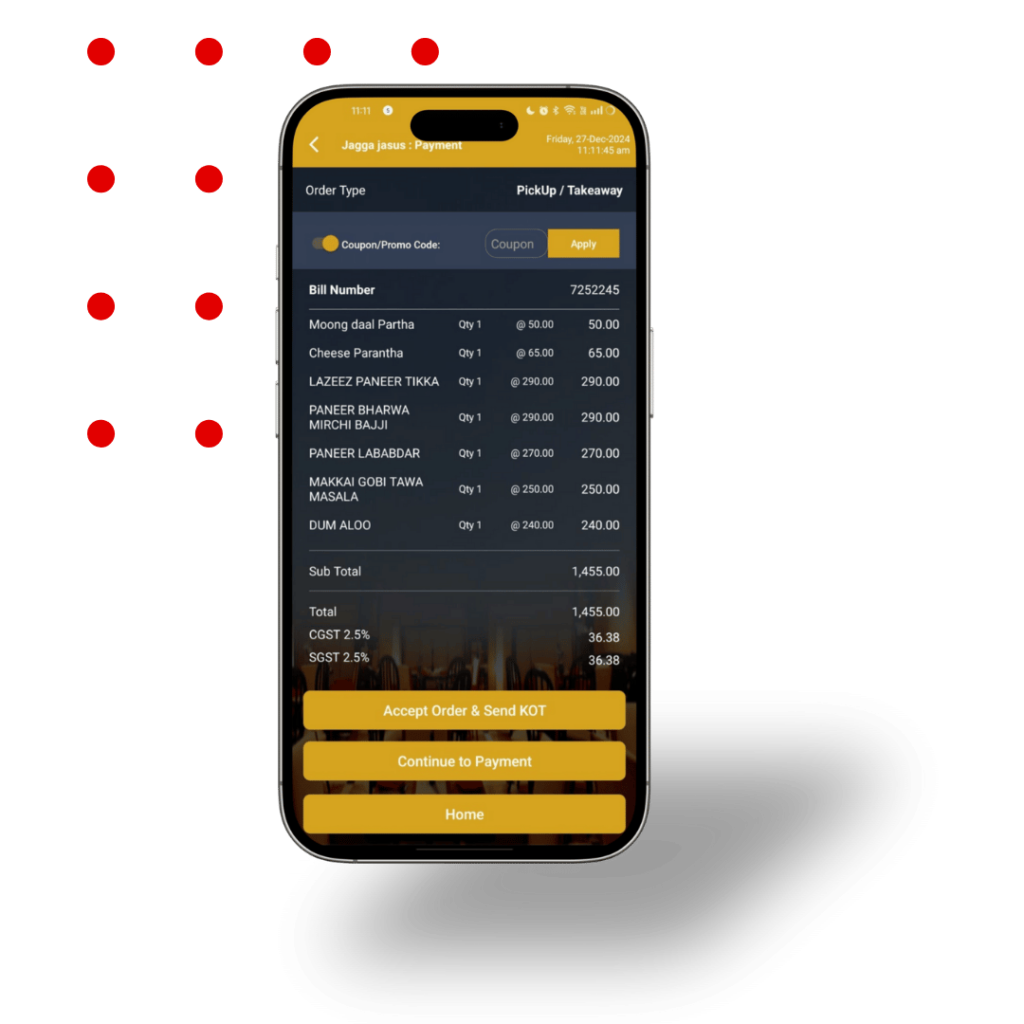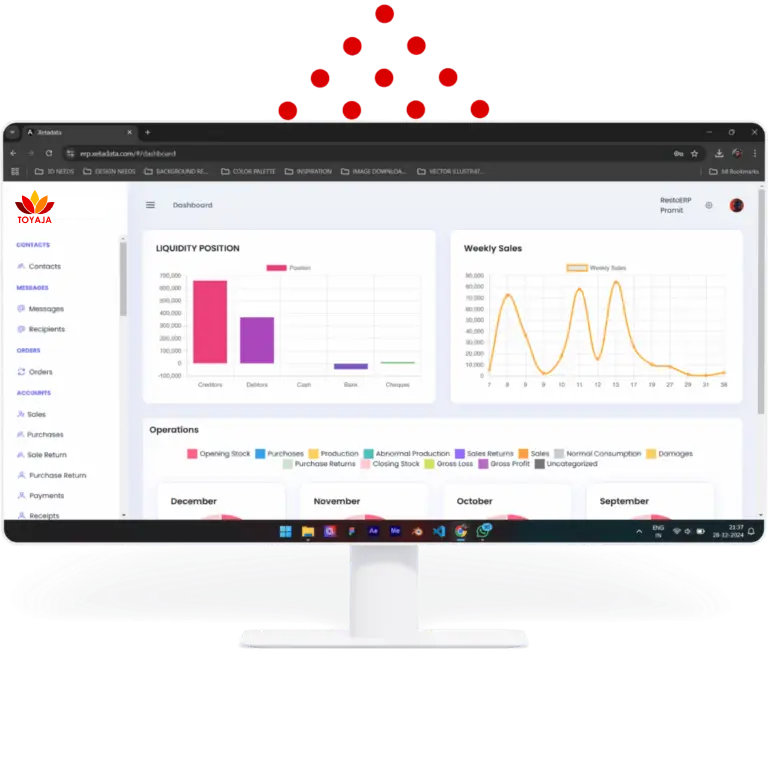The hidden inventory disaster costing restaurant owners their dreams – and the simple fix that saved one Mumbai owner ₹25,000 per month
Rajesh thought his Pune restaurant was doing brilliantly.
His North Indian dhaba was packed every evening. Zomato ratings soared to 4.2 stars. Food bloggers praised his butter chicken and dal makhani. The weekend queues stretched outside his door.
Yet somehow, he was losing sleep over mounting bills.
“I’d count the day’s collection – ₹35,000, ₹40,000 on good days,” Rajesh told me six months later. “But at month-end, there was barely enough to pay suppliers. I couldn’t understand where the money was going.”
Sound familiar? Rajesh’s story plays out in restaurants across India – from street-side dosas stalls in Chennai to fine-dining establishments in Gurgaon.
The Silent Killer Destroying Indian Restaurant Dreams
Here’s what’s really happening: Your inventory is eating your profits faster than customers eat your food.
The Indian restaurant industry’s biggest secret? Most busy restaurants are actually losing money. They just don’t realize it until it’s too late.
The Shocking Reality (These Numbers Will Surprise You)
- Average Indian restaurant wastes ₹12-15 lakh worth of food annually
- Food costs should be 30-35% of revenue, but most Indian restaurants hit 40-45% without knowing it
- Typical restaurant owners spend 2-3 hours daily on inventory tasks that could be automated
- One inventory miscalculation can wipe out the profit from 100+ meals
The worst part? None of this shows up in your daily sales reports.
The Night Rajesh Almost Shut Down
“It was during Diwali season,” Rajesh recalls. “We’d just had our best month ever – ₹12 lakh revenue. I should have been celebrating with sweets.”
Instead, he sat in his empty restaurant at 1 AM, surrounded by supplier bills and bank statements, trying to solve a puzzle that made no sense.
“I knew something was wrong with food costs, but my system was just a khata and some Excel sheets that my manager barely understood.”
That night, Rajesh discovered something shocking: He was losing money on his signature butter chicken.
The dish customers loved most? The one that brought them back? He thought it cost ₹95 to make. The real cost? ₹142.
He’d been selling it for ₹180, thinking he was making good profit. Reality? He was earning just ₹38 per plate – and that’s before rent, staff, and utilities.
The Three Inventory Demons Destroying Indian Restaurants
After working with restaurant owners across India, I’ve found three inventory problems that kill even the busiest
establishments:
![1[2]](https://toyaja.com/wp-content/uploads/2025/08/12.png)
Demon #1: The Cost Confusion
You don't know your real food costs.
Sure, you know vegetable market rates and what you pay for chicken. But do you know:
- The actual cost per plate after wastage?
- How daily price changes affect your margins?
- Which dishes are secretly losing money?
![2[1]](https://toyaja.com/wp-content/uploads/2025/08/21.png)
Demon #2: The Kitchen Black Hole
Your kitchen operations are invisible.
Priya from a popular South Indian restaurant in Bangalore put it perfectly: "We knew what
ingredients went in and what dishes came out, but everything happening inside was a mystery."
- How much rice did you actually use yesterday?
- Are your cooks consistent with portions, or does the evening shift use more ghee?
- Are your cooks consistent with portions, or does the evening shift use more ghee?
![3[1]](https://toyaja.com/wp-content/uploads/2025/08/31.png)
Demon #3: The Waste Monster
Your biggest loss is happening right under your nose
Quick exercise: Walk through your kitchen right now. Check your prep area, cold storage, and
the plates coming back from tables.
See those leftover rotis? The dal that's been sitting too long? The oversized portions your chef
insists on making?
That's not just waste. That's your profit going straight into the dustbin.
Most Indian restaurants waste 6-12% of everything they buy. For a restaurant doing ₹50 lakh
annually, that's ₹3-6 lakh thrown away. Every year.
![1[2]](https://toyaja.com/wp-content/uploads/2025/08/12.png)
Demon #1: The Cost Confusion
You don't know your real food costs.
Sure, you know vegetable market rates and what you pay for chicken. But do you know:
- The actual cost per plate after wastage?
- How daily price changes affect your margins?
- Which dishes are secretly losing money?
![2[1]](https://toyaja.com/wp-content/uploads/2025/08/21.png)
Demon #2: The Kitchen Black Hole
Your kitchen operations are invisible.
Priya from a popular South Indian restaurant in Bangalore put it perfectly: "We knew what
ingredients went in and what dishes came out, but everything happening inside was a mystery."
- How much rice did you actually use yesterday?
- Are your cooks consistent with portions, or does the evening shift use more ghee?
- Are your cooks consistent with portions, or does the evening shift use more ghee?
![3[1]](https://toyaja.com/wp-content/uploads/2025/08/31.png)
Demon #3: The Waste Monster
Your biggest loss is happening right under your nose
Quick exercise: Walk through your kitchen right now. Check your prep area, cold storage, and
the plates coming back from tables.
See those leftover rotis? The dal that's been sitting too long? The oversized portions your chef
insists on making?
That's not just waste. That's your profit going straight into the dustbin.
Most Indian restaurants waste 6-12% of everything they buy. For a restaurant doing ₹50 lakh
annually, that's ₹3-6 lakh thrown away. Every year.
![4[1]](https://toyaja.com/wp-content/uploads/2025/08/41.png)
Why Your Current System Is Failing You
After working with restaurant
1. Someone (probably you or your manager) walks around with a notebook
2. They count stock and scribble numbers
3. You enter it into Excel (if you’re organized)
4. You call suppliers based on “lagta hai ye khatam ho jayega”
5. Repeat this 2-3 hour drama daily
Manual systems can’t tell you
- Which supplier actually gives best value (after accounting for quality and waste)
- Your real food cost percentage right now
- Why your profits dropped last month
- Which dishes need immediate price revision
Sound familiar?
Here’s what actually happens during those hours:
- Hour 1: Miscounting because you’re tired and the delivery boy is waiting
- Hour 2: Fighting with Excel formulas that never seem right
- Hour 3: Making purchase decisions based on incomplete guesswork
The manager at Jaju Kitchen and Bar described their manual system as “cumbersome” –
restaurant-speak for “slowly making us pagal.”
The Transformation: From Chaos to Profit
Remember Rajesh’s ₹142 butter chicken disaster?
Four months after implementing proper inventory software, here’s what changed:
Smart Purchasing: Software revealed he was buying premium ingredients that customers
couldn’t distinguish in the final dish. Monthly savings: ₹8,000.
Portion Control: Real-time tracking showed his cooks were over-generous during peak hours -“customer khush rahega” mentality was killing profits. Monthly savings: ₹12,000.
Waste Reduction: Data pinpointed exactly when and where food was being wasted – mostly
during shift changes and weekend rushes. Monthly savings: ₹5,000.
Total monthly savings: ₹25,000
But the real win? Peace of mind.
“Now I sleep properly,” Rajesh says. “Instead of spending hours daily with confusion, I get clear
data in 30-40 minutes that actually helps me earn more.”
![5[1]](https://toyaja.com/wp-content/uploads/2025/08/51.png)
The Modern Solution Indian Restaurants Need
Today’s inventory management isn’t just digital bookkeeping – it’s business intelligence designed
for Indian restaurant challenges.
What Changes in Your First Month:
Month 1: Waste tracking reveals where money disappears – often it’s spoiled vegetables,
over-portioning, or theft you never noticed.
Month 3: Smart purchasing and menu optimization boost margins by 4-6 percentage points.
What Changes in Your First Week:
Week 1: You’ll see your actual food costs. Many owners are shocked to discover they’re
operating at break-even without realizing it.
Week 2: Automated alerts prevent both stockouts (no more “aaj biryani nahi hai”) and
overordering expensive ingredients.
Your 60-Second Reality Check
Answer honestly:
- Can you tell me your food cost percentage for last week? (Without digging through
papers for 30 minutes) - . Do you know which three dishes give you highest profit margins? (Not highest
prices – actual profit) - Have you run out of key ingredients during rush hours this month? (Bonus if it was
weekend dinner rush) - Can you identify your biggest source of daily waste? (Beyond “vegetables spoil
sometimes”)
If you answered “no” to any question, your current system is bleeding money daily.
Will It Work for Indian Operations?
One restaurant manager told us: “Data entry is pretty easy, and it made our life much, much
easier compared to our old khata system.”?
Modern systems work for Indian restaurants because they’re built understanding our challenges:
- Multiple suppliers with fluctuating prices
- Complex recipes with dozens of ingredients
- High-volume, fast-paced operations
- Staff with varying computer skills
![7[1]](https://toyaja.com/wp-content/uploads/2025/08/71.png)
The Real Cost of Ignoring This
Here’s the math that will shock you:
If your restaurant does ₹4 lakh monthly revenue:
- Annual cost of doing nothing: ₹1.5-2.5 lakh
- Poor inventory control costs ₹12,000-20,000 monthly in waste and wrong purchasing
- Manual systems waste 15-20 hours weekly of your management time
- Inaccurate costing leads to 3-5% margin loss
Annual cost of doing nothing: ₹1.5-2.5 lakh
Professional inventory software costs a fraction of this and typically pays for itself within 30
days.
Your Action Plan Starts Now
Stop treating inventory as a “zaruri burai” (necessary evil). Start using it as your
profit-maximizing weapon.
Successful Indian restaurants aren’t just the ones with great taste (though that’s important).
They’re the ones who know their numbers, control costs, and make smart decisions based on
data, not guesswork.
The question isn’t whether you can afford inventory software.
The question is whether you can afford to keep losing ₹1-2 lakh annually.
Take These Steps This Week
Step 1: Time your next inventory process. How many hours did it really take?
Step 2: Calculate your honest food cost percentage: (Revenue – Food costs) ÷ Revenue × 100
Step 3: Walk through your kitchen and estimate daily waste in rupees, not just “thoda bahut vegetables.”
Step 4: Multiply daily waste by 365. That’s your annual waste budget.
Shocked? Good. That shock is the first step toward change
Success Stories from Real Indian Restaurants
Mumbai Cafe Chain: Reduced food waste by 35% in 6 months, saving ₹1.2 lakh monthly
across 3 outlets.
Delhi Fine Dining: Discovered 4 menu items were loss-makers. After repricing, monthly profitincreased by ₹45,000.
Bangalore Cloud Kitchen: Cut inventory management time from 3 hours to 45 minutes daily.
Used saved time to launch 2 new brands.
Pune Family Restaurant: Identified supplier overcharging. Switching saved ₹8,000 monthly
with better quality ingredients.

Ready to stop losing money to poor inventory management?
The solution is simpler than you think, and results show up in week one.










